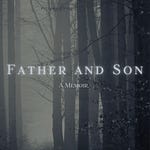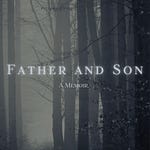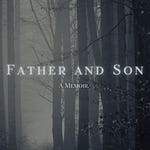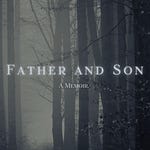The murder of Jacob Kohn wasn't merely some random killing in Boston's Back Bay—it was the brutal slaying of an elderly antique dealer, beaten to death with a claw hammer in 1947.
The killer left behind a single clue: a set of keys. Boston police methodically went door to door, testing locks, searching for the residence they belonged to. Eventually, those keys opened my father's apartment door, but he had already vanished.
What followed was an international manhunt that captivated the nation. The press described my father as handsome and debonair, featuring him daily in that "EXTRA, EXTRA, EXTRA" kind of sensationalism. Picture young newsboys on street corners shouting my father's name, followed by the chilling epithet: "the Hammer Murderer."
Police finally apprehended him in San Francisco, behind the wheel of his Sunbeam Talbot—an extinct breed of British sports car then equivalent in prestige and cost to a Porsche. Its distinctive rarity made it an odd choice for a fugitive, but that paradoxical flamboyance was quintessentially my father.
Soon after, the largest criminal trial in Boston's history commenced, with my father facing the death penalty. My grandfather, whom I wouldn't meet until I was nine years old, secured the finest legal defense money could buy. Despite this formidable representation, my father was convicted.
Thanks to my grandfather's connections, however, my father served less than six years. After his release, he met my mother, who was seventeen years his junior. They had four children together, and he rebuilt his life, establishing a successful career as a portrait painter.
We lived in Old Chatham, a small village in the northern Hudson Valley, where my father taught alongside several well-known artists at the Malden Bridge School of Art. From the outside, our lives appeared idyllic.
My mother cut a striking figure with her platinum blonde hair, fashionable jeans, and kitten heels, while my father cultivated an artistic persona, often wearing an ascot. We were seen as artsy, fun, and delightfully eccentric. This façade of perfection shattered, however, when my father, while drunk, struck and killed Nancy Campbell, whose husband owned Lindenwald, President Martin Van Buren's historic home.
In Columbia County during that era, anything could be arranged—and it was. The local newspaper belonged to one of my father's closest friends. The District Attorney proved amenable to looking the other way for the right consideration. Mr. Campbell, facing financial difficulties, agreed to convert the property into a museum in exchange for compensation and lifetime residence in the guest house. The entire incident vanished as if it had never happened.
Old Chatham was a forgotten paradise in the 1960s and 1970s, attracting privacy-seeking celebrities like Harry Belafonte, Rupert Murdoch, and Morris Levy. But being "born" there granted access to a different world of privilege, however insular.
The town protected more than just crimes—it guarded secrets with fierce loyalty. I never knew about my father's murderous past until after his death from a sudden heart attack (though even the circumstances of his death remain questionable). I met my half-brother for the first time on the morning my father died.
Were there signs of my father's violent history? No, none that I recognized as a child. Did I experience his violence firsthand? Yes, terrifyingly so.
He died when I was eleven. I knew who he presented himself to be, but not what he had done.
As I grew older and spent time with other families, I began to recognize our profound uniqueness. When I questioned aspects of my childhood, family members and old friends deflected with elaborate lies. Even decades after my father's 1976 death, people still actively blocked my inquiries. Finally, one of his friends cracked, offering a cryptic clue: everything I wanted to know about my father could be found in any library.
My siblings and I began methodically combing through newspapers from my father's lifetime. We found interviews about his PBS television pilot and coverage of his portrait of Governor Malcolm Wilson hanging in the Hall of Governors.
Weeks into our search, my brother Seth, working forward from 1920 while I worked backward from 1976, called out from across the library's microfiche room: "You need to see this." His voice carried the weight of revelation.
That discovery marked the beginning of uncovering the truth. This story belongs to a vanished era. Gone are the small towns where newspaper publishers wielded immense local power. Today, people seem more inclined to reveal secrets than keep them.
True privacy grows increasingly rare in our age of the Internet, social media, and ubiquitous cameras. The secrecy I knew as a child might as well have existed on another planet—a world where a murderer could reinvent himself completely, with an entire community complicit in maintaining his carefully constructed façade.
The murder of Jacob Kohn wasn't merely some random killing in Boston's Back Bay—it was the brutal slaying of an elderly antique dealer, beaten to death with a claw hammer in 1947.
The killer left behind a single clue: a set of keys. Boston police methodically went door to door, testing locks, searching for the residence they belonged to. Eventually, those keys opened my father's apartment door, but he had already vanished.
What followed was an international manhunt that captivated the nation. The press described my father as handsome and debonair, featuring him daily in that "EXTRA, EXTRA, EXTRA" kind of sensationalism. Picture young newsboys on street corners shouting my father's name, followed by the chilling epithet: "the Hammer Murderer."
Police finally apprehended him in San Francisco, behind the wheel of his Sunbeam Talbot—an extinct breed of British sports car then equivalent in prestige and cost to a Porsche. Its distinctive rarity made it an odd choice for a fugitive, but that paradoxical flamboyance was quintessentially my father.
Soon after, the largest criminal trial in Boston's history commenced, with my father facing the death penalty. My grandfather, whom I wouldn't meet until I was nine years old, secured the finest legal defense money could buy. Despite this formidable representation, my father was convicted.
Thanks to my grandfather's connections, however, my father served less than six years. After his release, he met my mother, who was seventeen years his junior. They had four children together, and he rebuilt his life, establishing a successful career as a portrait painter.
We lived in Old Chatham, a small village in the northern Hudson Valley, where my father taught alongside several well-known artists at the Malden Bridge School of Art. From the outside, our lives appeared idyllic.
My mother cut a striking figure with her platinum blonde hair, fashionable jeans, and kitten heels, while my father cultivated an artistic persona, often wearing an ascot. We were seen as artsy, fun, and delightfully eccentric. This façade of perfection shattered, however, when my father, while drunk, struck and killed Nancy Campbell, whose husband owned Lindenwald, President Martin Van Buren's historic home.
In Columbia County during that era, anything could be arranged—and it was. The local newspaper belonged to one of my father's closest friends. The District Attorney proved amenable to looking the other way for the right consideration. Mr. Campbell, facing financial difficulties, agreed to convert the property into a museum in exchange for compensation and lifetime residence in the guest house. The entire incident vanished as if it had never happened.
Old Chatham was a forgotten paradise in the 1960s and 1970s, attracting privacy-seeking celebrities like Harry Belafonte, Rupert Murdoch, and Morris Levy. But being "born" there granted access to a different world of privilege, however insular.
The town protected more than just crimes—it guarded secrets with fierce loyalty. I never knew about my father's murderous past until after his death from a sudden heart attack (though even the circumstances of his death remain questionable). I met my half-brother for the first time on the morning my father died.
Were there signs of my father's violent history? No, none that I recognized as a child. Did I experience his violence firsthand? Yes, terrifyingly so.
He died when I was eleven. I knew who he presented himself to be, but not what he had done.
As I grew older and spent time with other families, I began to recognize our profound uniqueness. When I questioned aspects of my childhood, family members and old friends deflected with elaborate lies. Even decades after my father's 1976 death, people still actively blocked my inquiries. Finally, one of his friends cracked, offering a cryptic clue: everything I wanted to know about my father could be found in any library.
My siblings and I began methodically combing through newspapers from my father's lifetime. We found interviews about his PBS television pilot and coverage of his portrait of Governor Malcolm Wilson hanging in the Hall of Governors.
Weeks into our search, my brother Seth, working forward from 1920 while I worked backward from 1976, called out from across the library's microfiche room: "You need to see this." His voice carried the weight of revelation.
That discovery marked the beginning of uncovering the truth. This story belongs to a vanished era. Gone are the small towns where newspaper publishers wielded immense local power. Today, people seem more inclined to reveal secrets than keep them.
True privacy grows increasingly rare in our age of the Internet, social media, and ubiquitous cameras. The secrecy I knew as a child might as well have existed on another planet—a world where a murderer could reinvent himself completely, with an entire community complicit in maintaining his carefully constructed façade.








